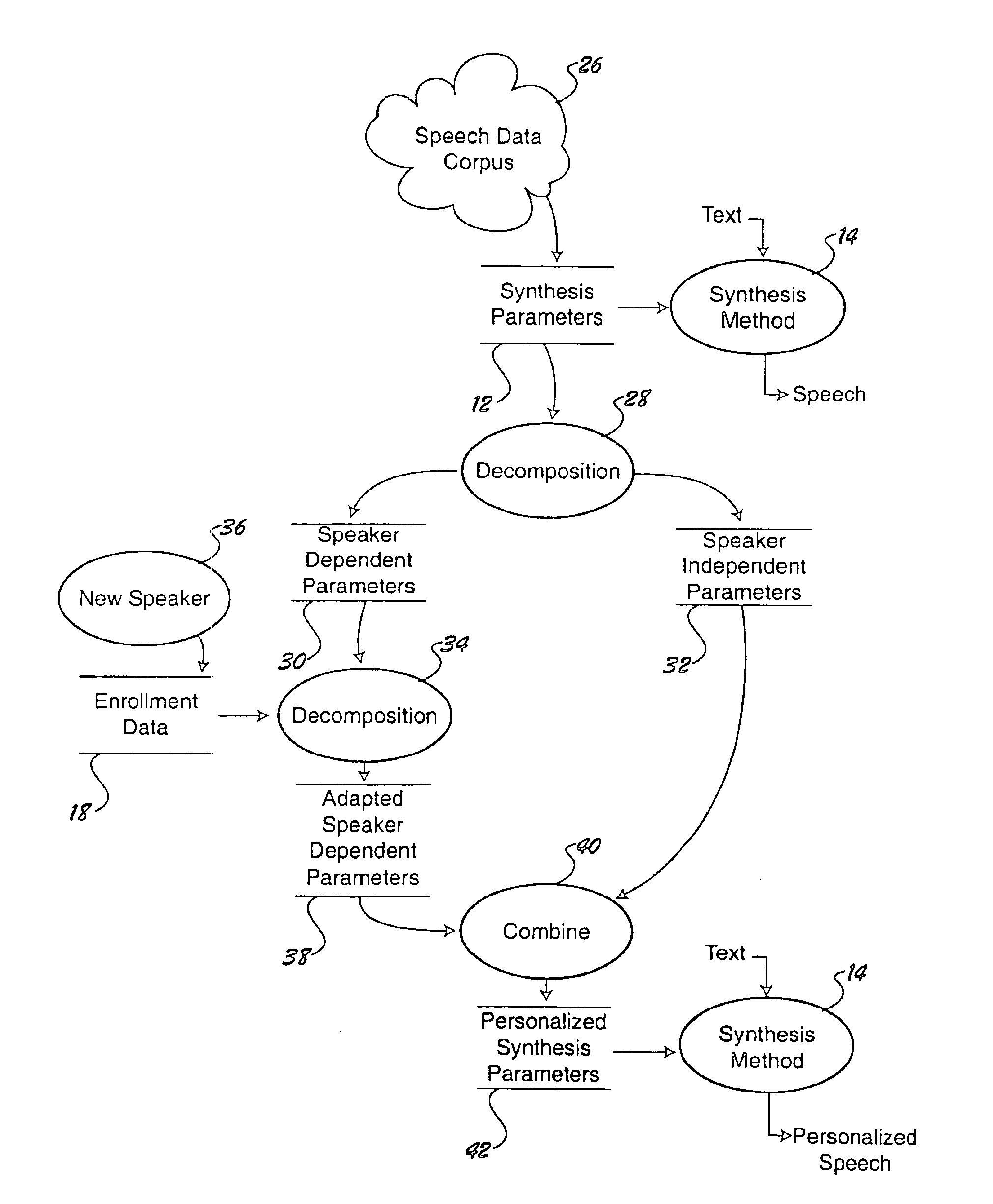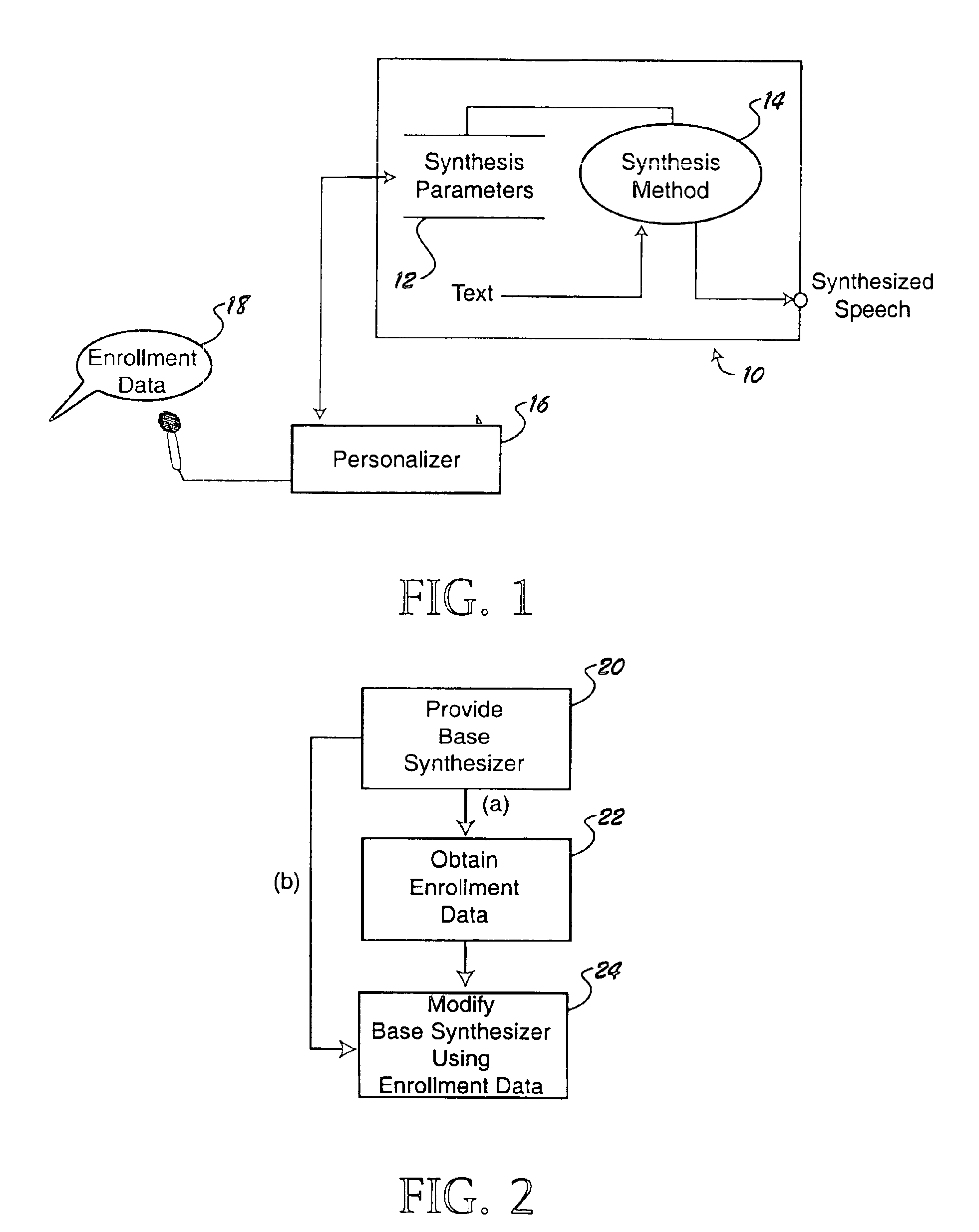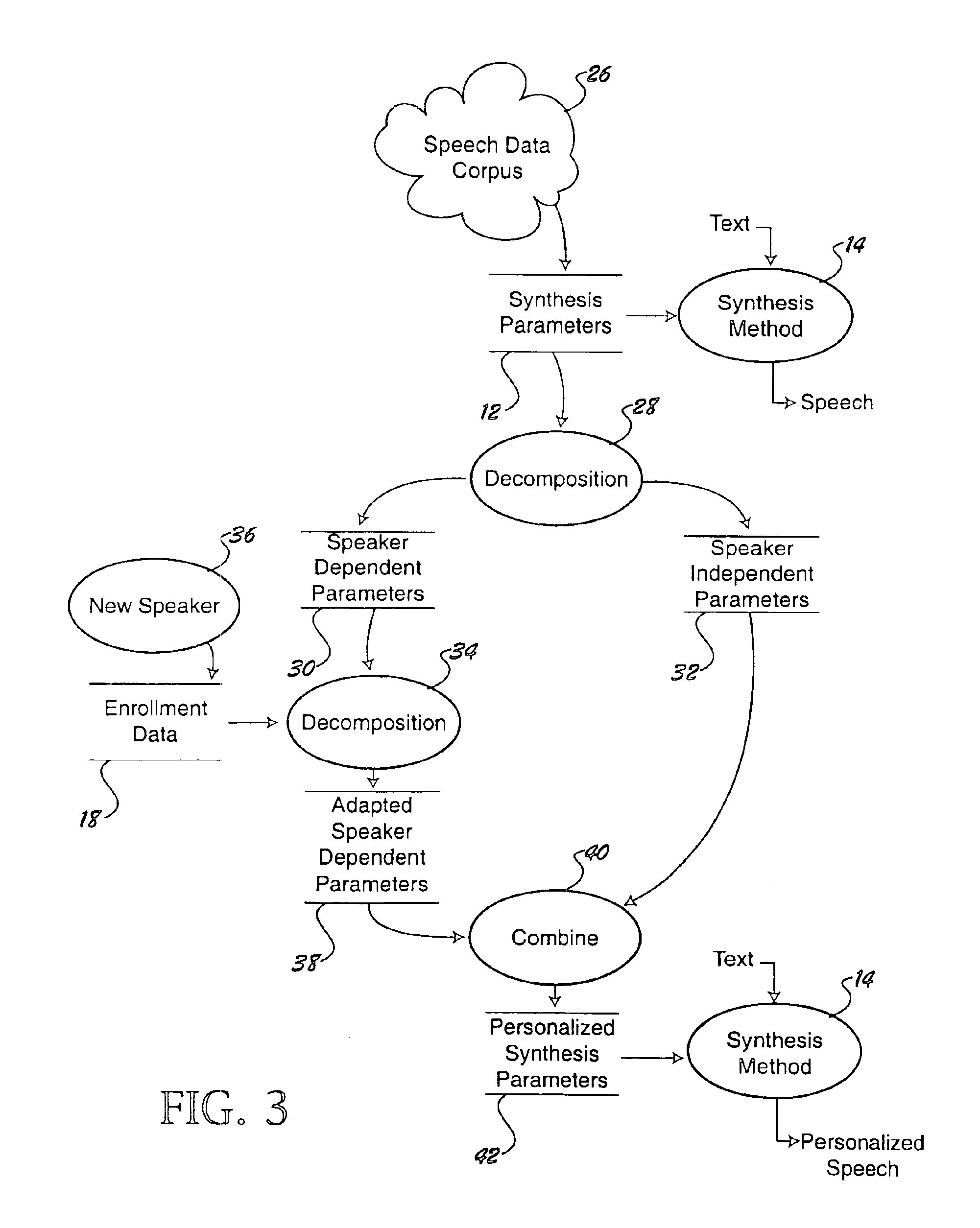Voice personalization of speech synthesizer
a voice and synthesizer technology, applied in the field of speech synthesis, can solve the problems of using a more complex filter structure, no effective way of producing a speech synthesizer that mimics the characteristics of a particular speaker, etc., and achieves the effect of minimizing computational burden, excellent personalization results, and maximizing the likelihood of extracting parameters
- Summary
- Abstract
- Description
- Claims
- Application Information
AI Technical Summary
Benefits of technology
Problems solved by technology
Method used
Image
Examples
Embodiment Construction
[0019]Referring to FIG. 1, an exemplary speech synthesizer has been illustrated at 10. The speech synthesizer employs a set of synthesis parameters 12 and a predetermined synthesis method 14 with which it converts input data, such as text, into synthesized speech. In accordance with one aspect of the invention, a personalizer 16 takes enrollment data 18 and operates upon synthesis parameters 12 to make the synthesizer mimic the speech qualities of an individual speaker. The personalizer 16 can operate in many different domains, depending on the nature of the synthesis parameters 12. For example, if the synthesis parameters include frequency parameters such as formant trajectories, the personalizer can be configured to modify the formant trajectories in a way that makes the resultant synthesized speech sound more like an individual who provided the enrollment data 18.
[0020]The invention provides a method for personalizing a speech synthesizer, and also for constructing a personalized...
PUM
 Login to View More
Login to View More Abstract
Description
Claims
Application Information
 Login to View More
Login to View More - R&D
- Intellectual Property
- Life Sciences
- Materials
- Tech Scout
- Unparalleled Data Quality
- Higher Quality Content
- 60% Fewer Hallucinations
Browse by: Latest US Patents, China's latest patents, Technical Efficacy Thesaurus, Application Domain, Technology Topic, Popular Technical Reports.
© 2025 PatSnap. All rights reserved.Legal|Privacy policy|Modern Slavery Act Transparency Statement|Sitemap|About US| Contact US: help@patsnap.com



